For young on-ice officials, the learning curve is steep but rewarding
Every June, the NHL takes over LECOM Harborcenter, the Buffalo Sabres' practice facility, to hold its scouting combine. With the draft a few weeks away, dozens of prospects undergo a series of fitness tests in front of general managers and other team staff before speaking to a swarm of reporters.
The NHL returns to Harborcenter every August. The second event is a four-day crash course for prospective referees and linespeople - a flurry of on- and off-ice testing in front of hiring managers for the NHL, AHL, and other pro and amateur leagues. In the dead of the offseason, with no external buzz, a different kind of prospect is quietly showcasing his or her skills for a job at ice level.
Fans might be surprised to learn two things about the officiating exposure combine, which launched in the late 2000s, evolved into its full-scale form in 2014, and expanded to Europe in 2023. One: Most participants are recently retired players. Two: Some ex-players arrive with zero officiating experience.
"They've all been sitting on benches throughout North America, calling offside plays, calling icing plays, letting the linesperson know when the draw wasn't ready, letting the referee know when they've missed a hook," NHL executive vice president and director of officiating Stephen Walkom said.
"They've been 'reffing' in their own way for at least a decade."
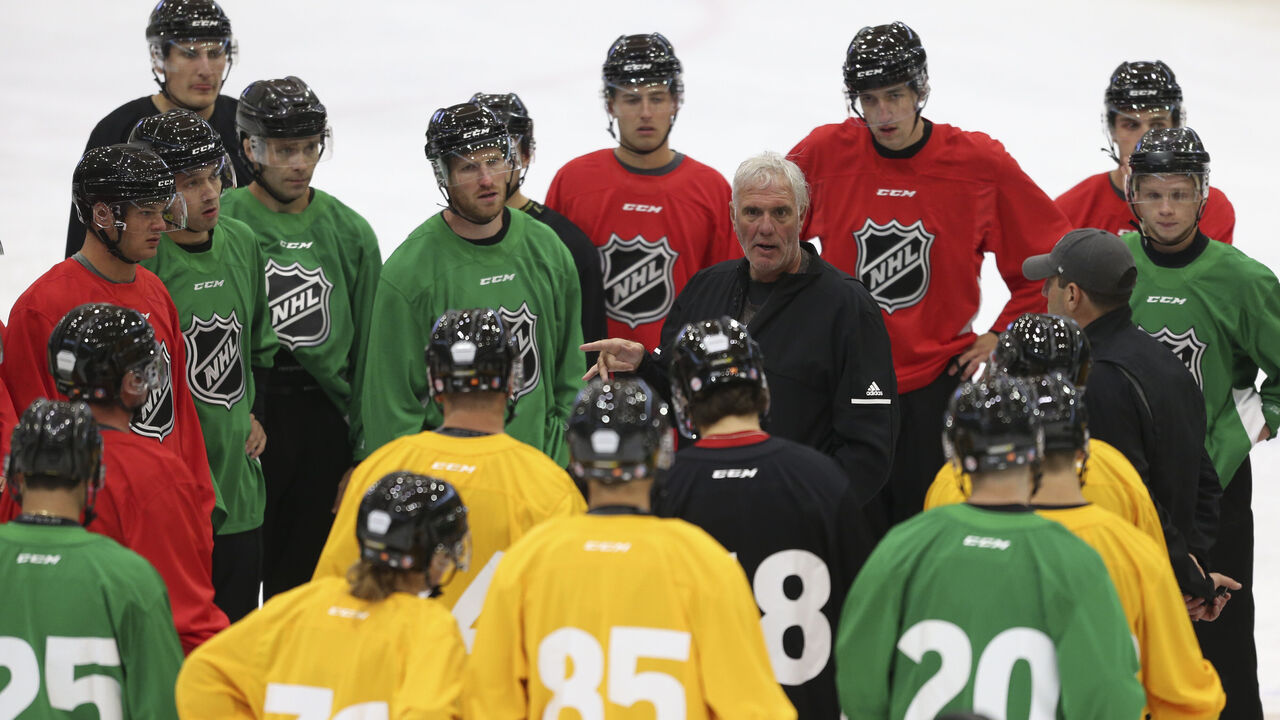
Among other benefits, this emphasis on recruiting athletes has diversified the workforce in many of the NHL's feeder leagues. The AHL's 2024-25 officiating crew features nine women - eight refs and one linesperson - while the ECHL, NCAA, USHL, OHL, WHL, and QMJHL have at least one calling games.
The NBA has eight female referees, and the NFL has three female officials. Jen Pawol umpired MLB spring training games in February. Walkom told theScore in 2019 it was "just a matter of time" before a woman officiated an NHL game. How close are we to seeing that become a reality six years later?
"I don't think I can give you a straight-up timeline," Walkom said.
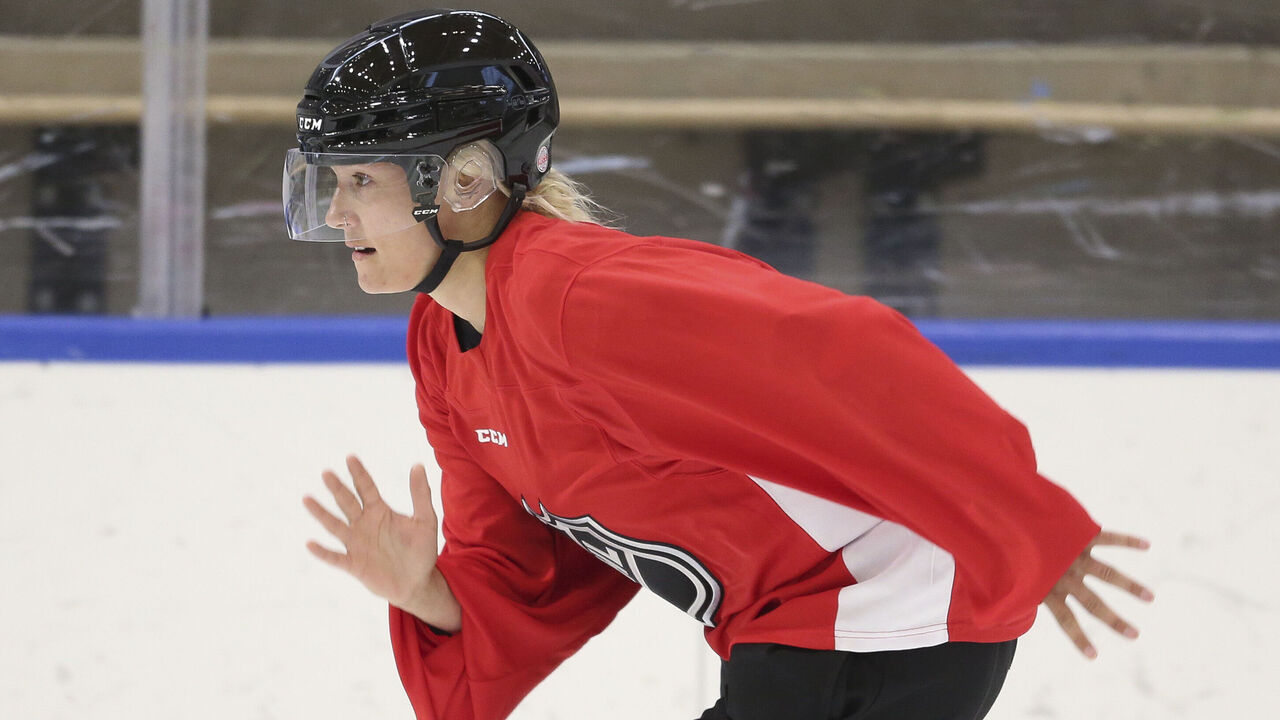
"We've seen some real progress in some of the men and women who are in the program. Everybody moves at their own pace," the former NHL ref added. "It's important that you conquer every league that you're in. We have some women who are doing well in the American Hockey League this year. You conquer the American Hockey League and the NHL is the next step."
Let's dig into the stories of two of those promising AHL officials.
Sydney Harris, referee
Harris' officiating journey began in earnest nine years ago.
Back then, she was a stay-at-home defender for Division III Elmira College in New York who over summer break would officiate youth and beer-league games in her home state of Colorado, mostly for fun.
"I didn't want to flip hamburgers for $7," Harris said with a laugh. "I wanted to make my own schedule, and I knew I could make a little bit more money officiating than I could in a minimum-wage job. It's good conditioning, too.
"Why not try, right?"
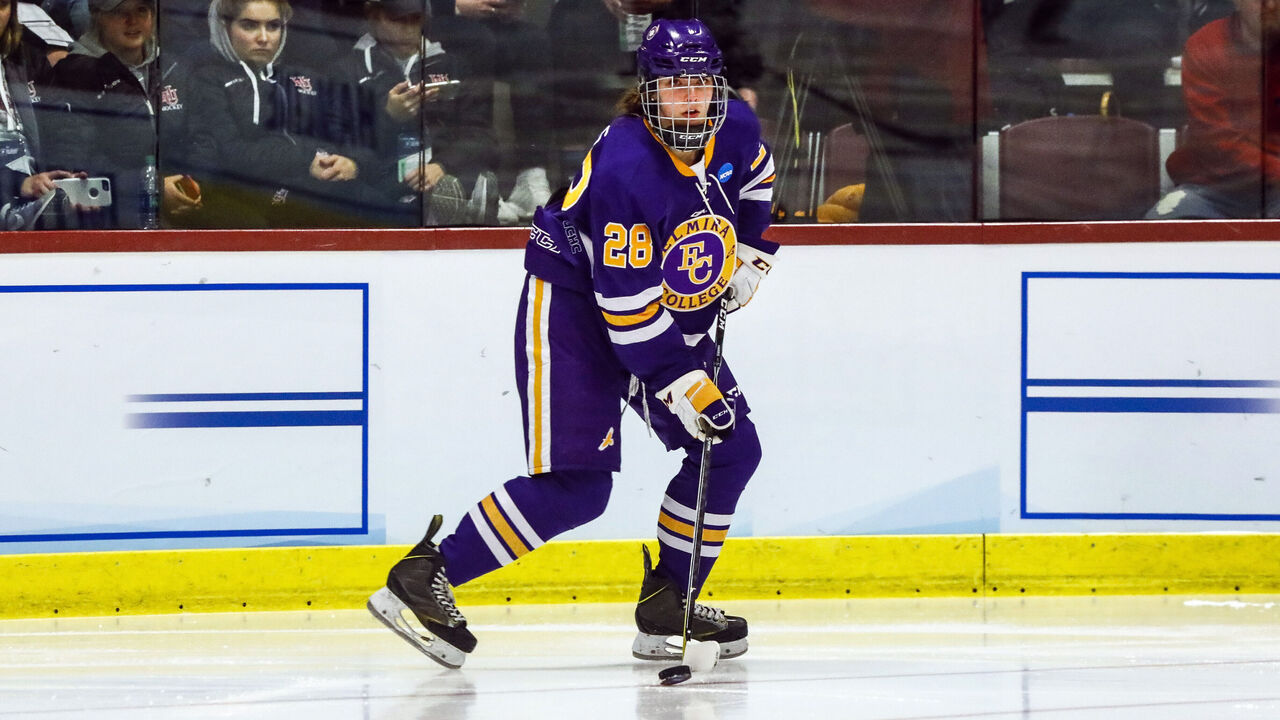
Harris - a three-year captain at Elmira who retired in 2022 - was invited to the 2024 exposure combine. She impressed Walkom and other evaluators and hasn't looked back. Harris became the ECHL's first female referee Dec. 6 in West Valley City, Utah. In her second game, with Utah again playing host to Kansas City the next night, two goalies threw down in a 13-goal, 92-penalty-minute tilt.
In a whirlwind first season in the pro pipeline, Harris has also reffed games in the AHL, BCHL, PWHL, NCAA men's and women's Division I, and various tournaments organized by the IIHF and USA Hockey.
"After the combine, I just said yes whenever I could," the 28-year-old said.
"Sydney has that drive," said Katie Guay, an officials manager for the NHL and PWHL who made history in 2021 as the AHL's first female official. "She's also not afraid to jump on the ice in high-pressure situations and fast-paced games. She's eager to learn and works really hard out there. She'll continue progressing with more games, more reps at these higher levels."
Harris officiates two to three games a week, typically flying out of Denver on Thursday night, blowing her whistle somewhere in North America on Friday and Saturday, then travelling home Sunday. What's tricky is that no two leagues are exactly the same. There are different styles of play, different degrees of scrutiny, different levels of professionalism, and in some cases, different rulebooks.
An official even maneuvers around the ice differently in each league.
"The amount of officiating knowledge that's been crammed into my head this year is crazy. I feel like I went through a Big Bang," said Harris, who's also working on a master's degree in applied sports psychology at Adams State.
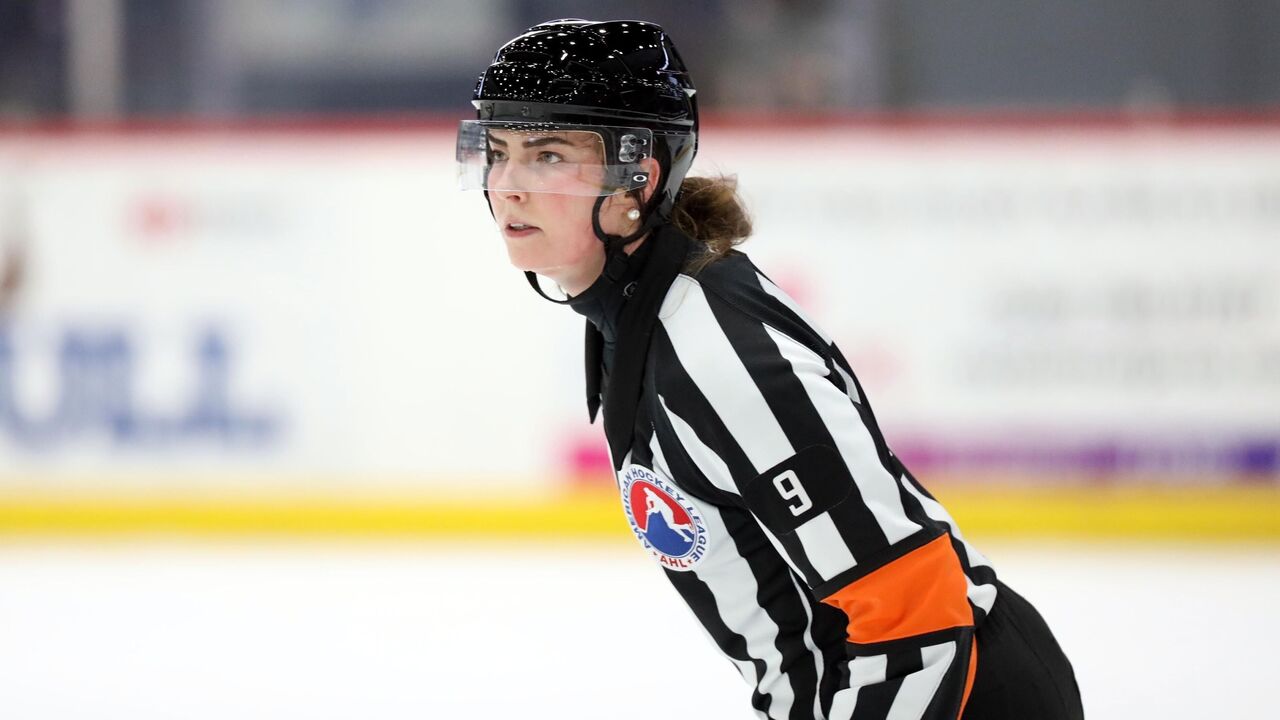
Harris is quick to pick the brains of fellow officials. She recently asked an NHL-contracted ref about the jump from the AHL to the NHL. The more experienced official noted that penalties are easier to spot in the top league.
"That's proved to be generally true," Harris said of her own read on the best leagues around. "Penalties stand out more with every higher league you work. The players are more skilled, smarter, so they don't make as many mistakes."
Walkom applauds Harris' skating, hockey IQ, and communication skills. All three traits are essential to thriving in an on-ice officiating career. Communication is especially key for referees, who are tasked with being the main point of contact - and target of complaints - for players and coaches.
"You have to be extremely good at emotionally regulating yourself because it is a stressful job," Harris said. "You have to have a good short-term memory as well, because it is a game of mistakes, not only for players but also for referees. One of my favorite phrases is this: 'We're not perfect, we're fair.'"
Kirsten Welsh, linesperson
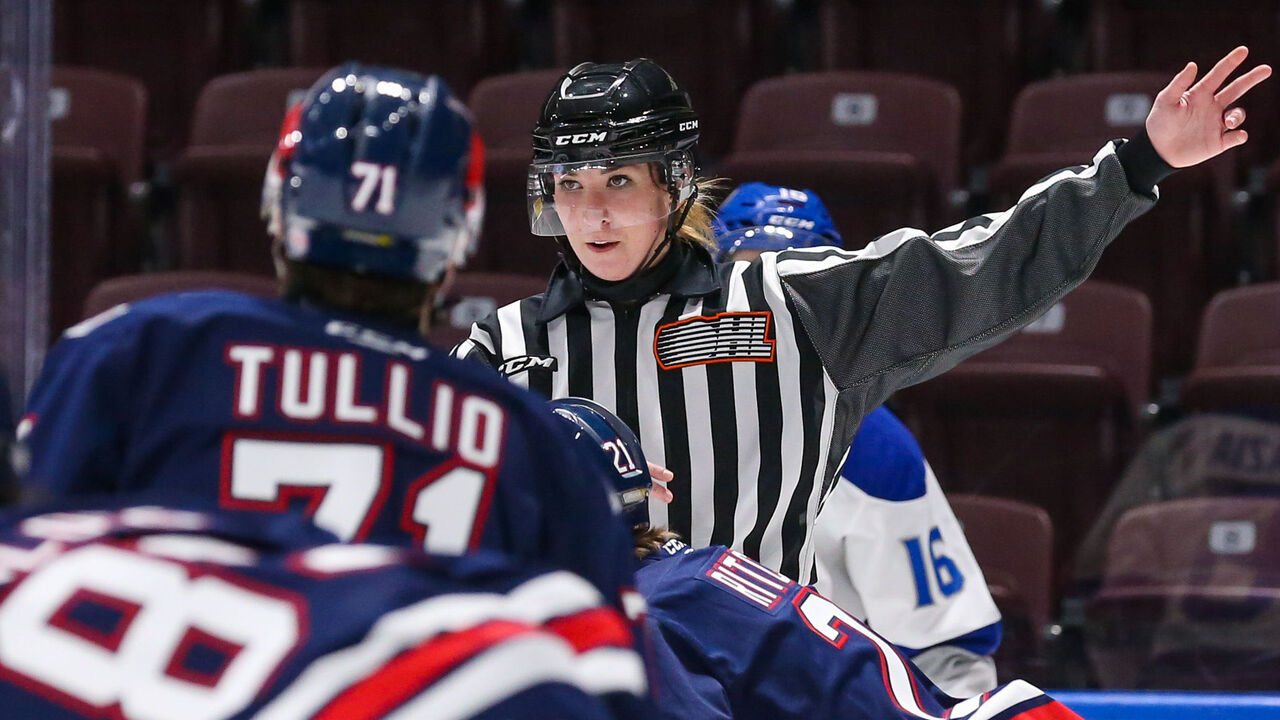
Welsh was in limbo in 2019. She had just completed her business degree and playing career at Robert Morris University in Pittsburgh and wanted to get her post-school life moving in some direction. The defender from Blackstock, Ontario, wasn't thrilled with the women's pro options at the time and knew coaching wasn't her speed. Then came an invitation to the exposure combine.
"I knew it was an opportunity to stay in the game. I went and fell in love with officiating," said Welsh, who's currently calling games at the women's world championships in Czechia and has AHL playoff experience under her belt.
"I know there's a lot of females who have come before me, who could have done just as good a job, if not better. But I just think it's a right-person-wrong-timing kind of thing for them. I happened to get into it at the right time, had the right opportunities, and I've taken them. I love what I do, and I'm so lucky I get to strap on the skates every weekend and go out on the ice."
Harris says linespeople are the "unsung heroes" at ice level, and it's hard to argue otherwise. They're tasked with moving the game along by assessing offsides and icings, dropping pucks for faceoffs, and breaking up scrums.
This is all in Welsh's wheelhouse. AHL executive vice president Hayley Moore loves her skating chops and work ethic. AHL commissioner Scott Howson describes her as "combative" and "fiery." Guay calls her "fearless on the ice."
"I led the NCAA when I was a freshman in penalty minutes," said Welsh, who's 6-feet, 160 pounds. "I've always loved the physical side of the game."
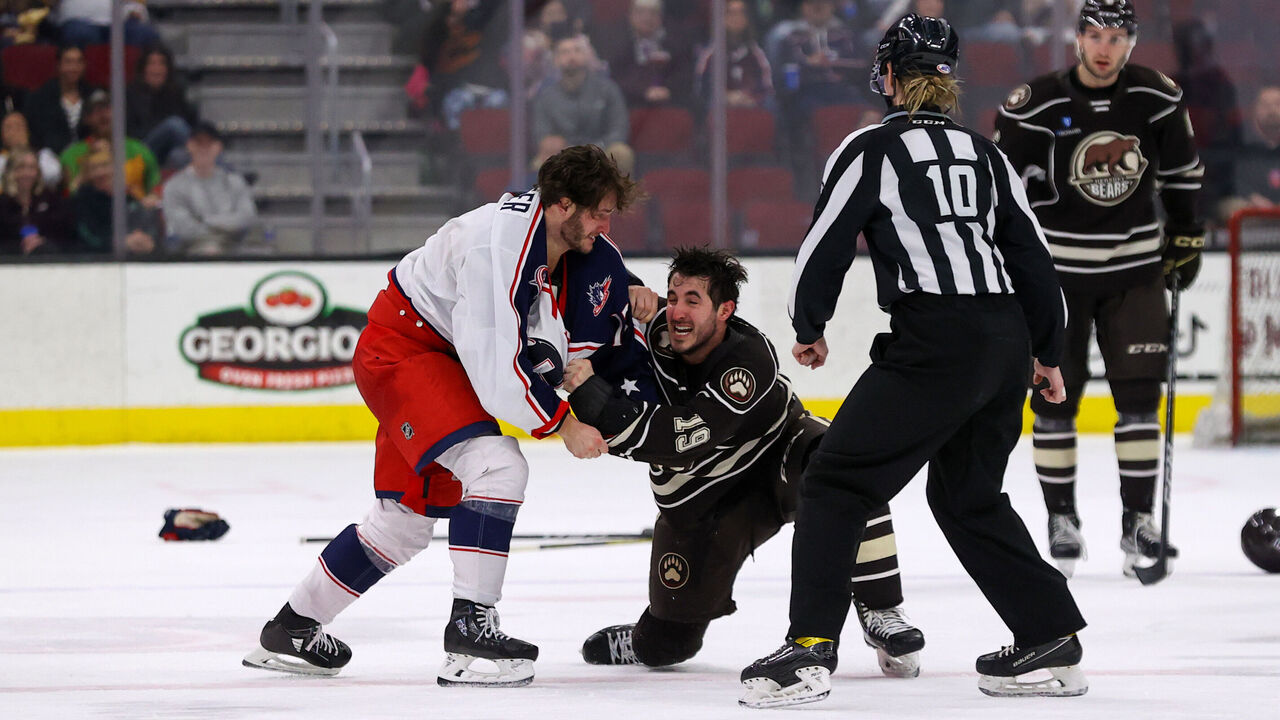
One of Welsh's biggest takeaways through five-plus years of lines duty: You have to kill the player inside of you. Officials tap into a different kind of intensity and focus. You're in "the fight," sure, but in a less direct way. And, as she points out, breaking up scrums and fights is actually more about timing.
"It's not as based around strength as you'd probably think. It's more about the tactics behind it," Welsh said. "Even in the NHL - say you have Tom Wilson and Ryan Reaves going at it, not one linesman on staff is going to be stronger than those two. My mentality is that you let them fight, let them do their thing, and then when they're tired, that's when you insert yourself."
Welsh and Harris say they have encountered very limited negativity from players and coaches in men's hockey; they're treated no differently than their male counterparts. At the AHL head office, Moore and Howson have fielded a greater sum of complimentary phone calls than critical ones.
"Scott and I both get phone calls or have conversations with people who are genuinely concerned," Moore said of a third type of call. "They want to make sure that a woman doesn't get hurt. And I ask them, 'Are you concerned about our male referees as well, some of whom might not be as good of skaters or be as physically fit as these women?' That's the nature our society.
"Nobody wants to accidentally punch a female linesperson in a scrum, but they should be also concerned about accidentally punching a male linesperson in a scrum."
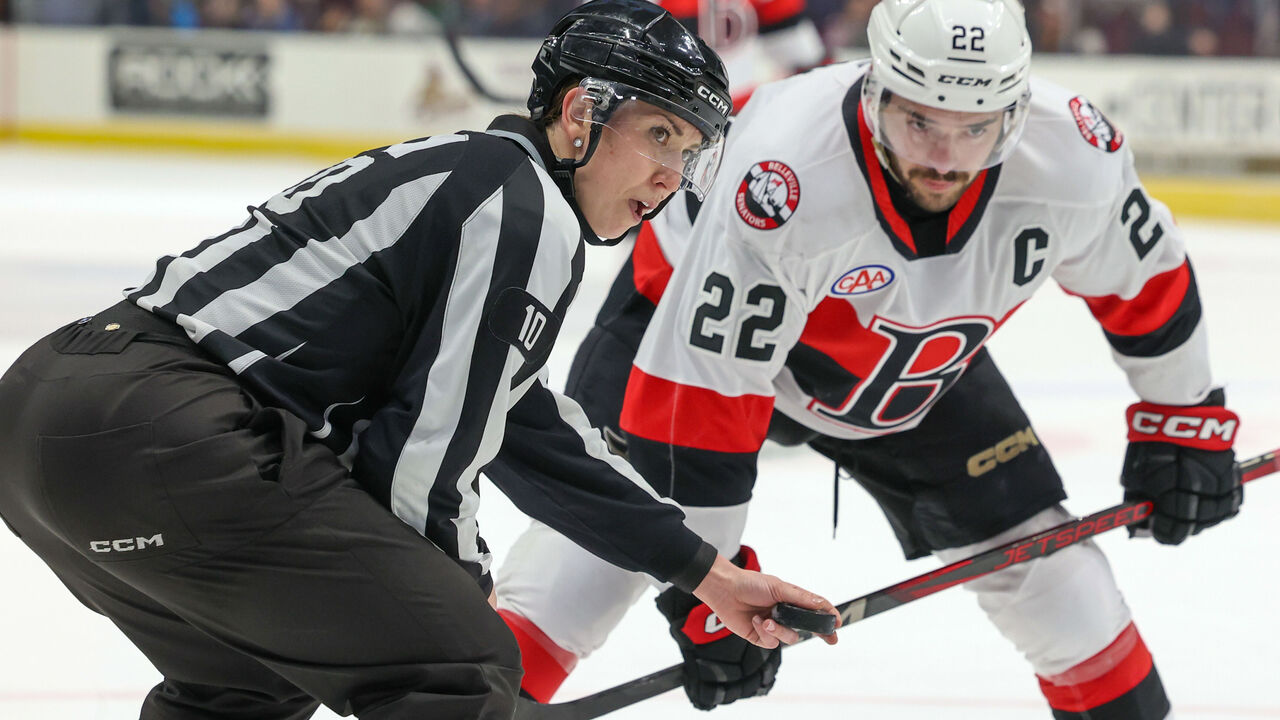
Welsh, who holds down a full-time sales job in addition to her dizzying hockey schedule, is known in officiating circles for her all-in attitude as she climbs the ranks and perhaps one day earns an NHL contract. The Seattle Kraken's Jessica Campbell, the first female full-time NHL coach, is her role model.
"She's earned the right to participate in the men's game inside the glass because she's done her time, she's good at what she does - she's proven it all - and everyone accepts her," Welsh said of Campbell. "If you're going to be a female in a position inside the glass, you have to earn it."
Welsh, the first woman to officiate an OHL game, will sometimes catch in the corner of her eye a kid with eyes big and a wide smile staring at the one official on the ice with a ponytail. "If it's a little girl," she said, "I always try to throw her a puck after the period."
John Matisz is theScore's senior NHL writer. Follow John on Twitter (@MatiszJohn) or contact him via email ([email protected]).
HEADLINES
- What's next for Leafs after yet another excruciating playoff exit?
- Hurricanes refute boring reputation: 'We're trying to win hockey games'
- Marner says it's too early to discuss Leafs future; Tavares hopes to stay
- Conn Smythe Rankings: West hoarding top candidates
- Maurice defends Leafs again: Character flaws 'just aren't true'